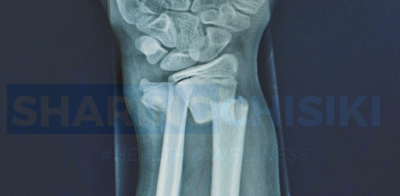Participating in sports is an excellent way to stay physically active, maintain good health, and develop new skills. However, injuries can occur during sports activities that can cause pain, limit mobility, and prevent athletes from playing or practicing. Therefore, it is essential to understand how to prevent common Sports Injuries. This guide will cover the most common types of sports injuries, the causes of these injuries, and how athletes can reduce their risk of getting injured.
Types of Sports Injuries
There are several types of sports injuries, ranging from minor strains and sprains to severe fractures and dislocations. Here are some of the most common sports injuries:
Sprains
Sprains occur when ligaments, which are the tough bands of tissue that connect bones to one another, are stretched or torn. The most common types of sprains are ankle sprains, which occur when the ankle twists or turns in an awkward manner.
Strains
Strains are similar to sprains, but they affect muscles or tendons instead of ligaments. The most common types of strains are hamstring strains, which occur when the muscles at the back of the thigh are stretched or torn.
Fractures
Fractures occur when bones break or crack due to high force or impact. The most common types of fractures are stress fractures, which occur due to repetitive stress on the bones.
Dislocations
Dislocations occur when bones are forced out of their normal positions. The most common types of dislocations are shoulder dislocations, which occur when the upper arm bone pops out of the shoulder socket.
Causes of Sports Injuries
Sports injuries can occur due to several factors, including:
Overuse
Overuse injuries occur due to repetitive stress on the muscles, bones, or joints. Athletes who practice or play sports for extended periods without proper rest and recovery can develop overuse injuries.
Poor Technique
Poor technique or form during sports activities can put undue stress on the muscles, bones, or joints, leading to injuries. Athletes should learn proper techniques and form for their sports activities to reduce their risk of injury.
Inadequate Warm-Up
Inadequate warm-up before sports activities can increase the risk of injury. Athletes should spend at least 10-15 minutes warming up before engaging in sports activities.
Fatigue
Fatigue can increase the risk of injury by reducing an athlete's coordination, reaction time, and judgment. Athletes should take adequate rest breaks and ensure they get enough sleep to prevent fatigue-related injuries.
How to Prevent Sports Injuries
Here are some tips to prevent sports injuries:
Wear Proper Gear
Athletes should wear proper gear, including helmets, pads, and shoes, to protect themselves from injury.
Learn Proper Technique
Athletes should learn proper techniques and form for their sports activities to reduce their risk of injury. Coaches or trainers can help athletes learn proper techniques.
Warm-Up
Athletes should spend at least 10-15 minutes warming up before engaging in sports activities. Warm-up exercises can include light jogging, stretching, or practicing the sports activity at a low intensity.
Stay Hydrated
Athletes should stay hydrated by drinking water or sports drinks before, during, and after sports activities. Dehydration can increase the risk of injury.
Take Rest Breaks
Athletes should take adequate rest breaks during sports activities and ensure they get enough sleep to prevent fatigue-related injuries.
Cross-Train
Athletes should cross-train by engaging in different sports or activities to reduce the risk of overuse injuries.
Listen to Your Body
Athletes should listen to their bodies and take a break or seek medical attention if they experience pain or discomfort during sports activities.
What to Do If You Get Injured
Despite taking precautions, athletes can still get injured. Here's what to do if you get injured:
Stop Playing
If you feel pain or discomfort during sports activities, stop playing immediately. Continuing to play can worsen the injury and increase the recovery time.
Rest
Rest is crucial for injury recovery. Depending on the severity of the injury, rest can range from a few days to several weeks or months.
Ice, Compression, Elevation
Ice, compression, and elevation (ICE) can help reduce swelling and pain associated with sports injuries. Apply ice to the injured area for 15-20 minutes at a time, several times a day. Use compression wraps to support the injured area, and elevate the injured area above the heart to reduce swelling.
Seek Medical Attention
If the injury is severe or does not improve with rest and ICE, seek medical attention. A doctor can diagnose the injury and recommend a treatment plan.
Conclusion
Sports injuries can be painful and limit an athlete's ability to participate in sports activities. However, with proper precautions and preventative measures, athletes can reduce their risk of getting injured. Wearing proper gear, learning proper technique, warming up before sports activities, staying hydrated, taking rest breaks, cross-training, and listening to your body are all essential steps in preventing sports injuries. In case of injury, stop playing, rest, apply ice, compression, and elevation, and seek medical attention if necessary.
FAQs
Q: What are the most common sports injuries?
A: The most common sports injuries are sprains, strains, fractures, and dislocations.
Q: How can I prevent sports injuries?
A: You can prevent sports injuries by wearing proper gear, learning proper technique, warming up before sports activities, staying hydrated, taking rest breaks, cross-training, and listening to your body.
Q: What should I do if I get injured during sports activities?
A: Stop playing immediately, rest, apply ice, compression, and elevation, and seek medical attention if necessary.
Q: Can fatigue increase the risk of sports injuries?
A: Yes, fatigue can increase the risk of sports injuries by reducing an athlete's coordination, reaction time, and judgment.
Q: Is it essential to learn proper technique for sports activities?
A: Yes, learning proper technique for sports activities is essential to reduce the risk of injury. Coaches or trainers can help athletes learn proper techniques.
 Sharing Chisiki
March 24, 2023
Sharing Chisiki
March 24, 2023
 Sharing Chisiki
March 24, 2023
Sharing Chisiki
March 24, 2023





















